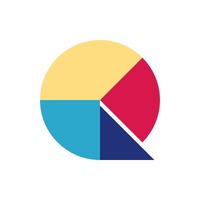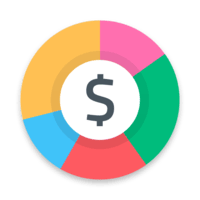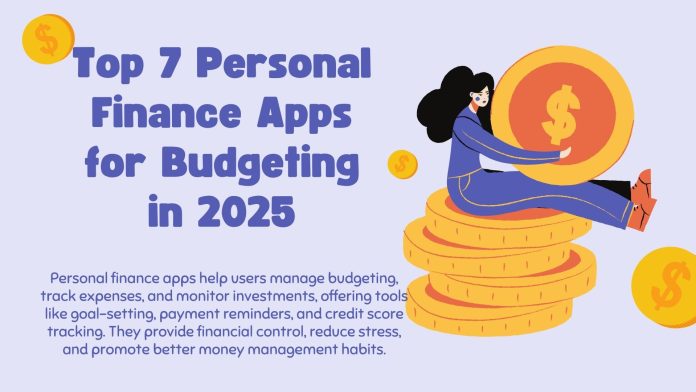Managing your personal finances in today’s digital world has never been easier, thanks to powerful budgeting apps designed to help you take control of your money. In 2025, a wide range of personal finance apps offer smart features that support budgeting, spending insights, and saving goals. This article highlights the top 7 finance apps that stand out for their usability, reliability, and financial insight.
What is Personal Finance Apps?
Personal finance applications function as digital management tools that deliver financial control from mobile phones, tablet devices, and computer systems. These applications handle financial planning operations by bringing together all functions, which include tracking income and expenses and monitoring savings, investments, and bills. These apps serve three main purposes by helping users build budgets and set goals and track expenses together with financial status monitoring. Most apps enable monitoring of transactions and data analysis through real-time connections to bank accounts and credit cards as well as digital wallets. Such features help users understand how their finances are distributed so they can easily decide which areas need adjustments.
The features included in personal finance apps consist of automatic expense tracking alongside budget creation platforms and financial target building in addition to payment reminder and credit score tracking capabilities. Besides basic features, some advanced applications provide users with investment management capabilities as well as savings guidance tools along with debt reduction functions and tax preparation assistance. With personal finance apps users gain access to a wide range of advantages that help them develop better money management habits along with stress reduction and future financial planning capabilities. Users benefit from these apps as digital financial advisors because they promote better money habits and provide control through overdraft fee avoidance and a platform to save toward goals.
Here is the list of Personal Finance Apps
1. Mint

The personal finance app Mint was developed by Intuit to provide users with money tracking features and spending management abilities as well as budget creation services through its unified system. Mint provides full-time monitoring of your financial activity through its integration with bank accounts together with credit cards along with bills and investments. This platform uses automated transaction organization to follow spending activities and sends notifications about strange account changes and future charges and budget exceedance.
The platform serves people who want better money handling together with decreased wasteful spending alongside sustained focus on monetary goals. Through its platform people who want to manage debt better or plan major expenses or exercise financial control can benefit from features like budgeting templates goal setting and credit score tracking alongside personalized financial tracking tools. The tool provides valuable benefits for beginners because its graphical user interface and automatic features simplify financial monitoring tasks.
Key Features
- Budget tracking and categorization
- Credit score monitoring
- Bill reminders and alerts
- Goal setting for savings
Pros
- User-friendly dashboard
- Free to use
- Real-time expense tracking
Cons
- Contains ads
- Limited investment tracking
Who Should Use It
Best for individuals looking for a free, all-in-one money management app.
Specs & Configurations
- Platforms: iOS, Android, Web
- Syncs with: Banks, Credit Cards, Loans
2. YNAB (You Need A Budget)

YNAB (You Need A Budget) functions as a personal finance application that lets users gain full money control using a forward-budgeting method. Instead of tracking past spending like traditional tools YNAB helps users assign spending purposes to every dollar they receive before making a purchase. Users develop better financial awareness through this method which lets them establish habits for savings as well as spend smarter.
The main user demographic of YNAB consists of people desiring to end their dependency on direct paycheck withdrawal and eliminate debt and refine their financial management skills. Users who set financial goals benefit most from this system because it combines structure with accountability. COPE cube allows users to benefit from real-time device coordination in addition to profile customization options for budget categories and financial goal assessment tools and complete expense tracking reports. Through YNAB’s method users can understand their financial situation better while acquiring skills to plan for both immediate and long-term periods.
Key Features
- Zero-based budgeting
- Detailed reporting and trend analysis
- Goal tracking and debt payoff features
Pros
- Encourages mindful spending
- Offers workshops and tutorials
Cons
- Subscription required
- Learning curve for new users
Who Should Use It
Ideal for proactive budgeters who want in-depth control over every dollar.
Specs & Configurations
- Platforms: iOS, Android, Web
- Syncs with: Bank accounts, import transactions
3. Qapital

Qapital delivers its personal financial management application to iOS and Android through Qapital, LLC. Through gamified user habits Qapital creates an interface to drive people toward saving money. The Qapital platform operates through linked bank accounts that execute automatic savings withdrawals according to rules which include depositing small round-ups from transactions and establishing daily financial contributions. The application design enables automatic saving processes that do not need any direct activity from users.
Qapital provides users with budgeting functionality and investment and debt management solutions in addition to its savings capabilities. Through the platform users create multiple savings targets which they can automate so they can monitor their financial development. Users can access the debit card function of Visa through this app for saving purposes. Qapital provides a simple user interface combined with behavioral science principles to create a financial management system that makes goal achievement straightforward for its users.
Key Features
- “In My Pocket” spendable balance view
- Auto-categorization of expenses
- Bill negotiation services
Pros
- User-Friendly Interface
- Automated Saving
- Gamification
- Customizable Goals
- Bank Integration
Cons
- Limited Investment Options
- Monthly Fees
- No Joint Accounts
- No Cash Deposits
Who Should Use It
Specs & Configurations
- Platforms: iOS (iOS 12.0 or later), Android (Android 5.0 or later
- Security: Bank-level encryption, two-factor authentication (2FA) for added security.
- Bank Integrations: Supports numerous banks, credit cards, and digital wallets.
4. Goodbudget

Goodbudget provides budgeting system for individuals through its personal finance application with a method of money management that proves effective. Users can establish virtual budgeted envelopes rather than traditional physical envelopes on this application which enables them to organize their household money between rent, grocery expenses and entertainment costs. Users who allocate money across envelopes through this system can effectively budget their spending before overspend occurs. The functional web application and mobile solution makes it easy for users to handle their budget whenever they want.
The budgeting application Goodbudget provides excellent functionality for people who want to strengthen their budgeting practice. Budget synchronization across multiple devices becomes possible on this app because it offers specific functionality for household members to monitor their shared finances jointly. The system includes debt tracking capabilities along with large cost savings functionality and debt reduction monitoring features. The financial management tools in Goodbudget allow users to achieve monetary targets while building security through its sophisticated budgeting features.
Key Features
- Envelope budgeting system
- Manual transaction entry
- Shared budgeting for couples or families
Pros
- Good for beginners
- Focuses on cash flow
Cons
- Manual entry required
- Not ideal for automatic syncing
Who Should Use It
Perfect for couples or families budgeting together.
Specs & Configurations
- Platforms: iOS, Android, Web
- Syncs with: Manual entry only
5. EveryDollar

Through Ramsey Solutions EveryDollar presents itself as an app that uses zero-based budgeting methodology. EveryDollar dictates users to disburse their entire income through predefined categories which must add up to the exact amount of incoming money. Users can choose between two EveryDollar versions: a free manual mode or the premium edition with automatic bank connection. The Premium version of the app offers paycheck planning along with budget customization and goal setting in addition to group financial coaching as one of its key features. The EveryDollar program exists for web and Android and iOS platforms which enables users to manage budgets throughout the day.
Key Features
- Monthly budgeting tool
- Zero-based budgeting
- Integration with Ramsey+ financial program
Pros
- Clean interface
- Encourages goal-based planning
Cons
- Full features behind paywall
- Limited financial tracking tools
Who Should Use It
Suitable for fans of Dave Ramsey or those following his baby steps program.
Specs & Configurations
- Platforms: iOS, Android, Web
- Syncs with: Banks (premium only)
6. Personal Capital (Now Empower)

Empower (formerly Personal Capital) functions as an extensive financial management ecosystem that presents users with one central view of their financial situation. With Empower users can connect their bank accounts to their credit cards and loans as well as their investment portfolios to monitor their financial status. Empower allows users to access two key features such as Fee Analyzer™ and a retirement planner based on Monte Carlo simulations to assess financial scenarios. Empower offers its customers a federally-insured cash account which features high interest yields and possesses no charging expenses for the service.
The financial management platform Empower (formerly Personal Capital) enables customers to personalize their money planning through strategy solutions called Personal Strategy and Personal Strategy+. Higher net worth clients receive expert retirement planning services alongside private equities along with legacy planning packages through this platform. Empower connects employer retirement plans to individual investments thereby generating an inclusive view of finances. Fee Analyzer™ functions within the platform to detect undisclosed investment fees and users have access to goal-setting alongside cash flow tracking capabilities. Through these tools users gain simple solutions to control their financial destiny.
Key Features
- Net worth and investment tracking
- Budgeting tools
- Retirement planner
Pros
- Great for high-net-worth users
- Includes wealth management tools
Cons
- Less focus on everyday budgeting
- Can be complex for new users
Who Should Use It
Ideal for investors and individuals focused on long-term wealth.
Specs & Configurations
- Platforms: iOS, Android, Web
- Syncs with: Banks, Investment accounts
7. Spendee

Users can track their expenses and budgets using Spendee which serves as an application for effective financial management. With the built-in charts and graphs Spendee enables users to keep track of their income and expenses while allowing them to create budgets and view their financial behavior patterns. Users can enable automatic transaction import from their bank accounts, e-wallets and crypto wallets but also have the option to enter expenses resulting from cash transactions. The expense-tracking application Spendee enables users to design specific categories for detailed monitoring and features shared wallets for collaboration and supports multiple currencies for financial monitoring.
Spendee provides users with essential spending and saving control through its main advantage. Through its obvious financial tracking feature the application assists users with achieving their financial goals by supporting them in making correct decisions. Users can access the user-friendly app through iOS and Android platforms due to its seamless device synchronization features. Spendee acts as a complete platform that assists users in controlling their personal finances regardless of their goal whether it is vacation preparation or investment tracking.
Key Features
- Budget planning by wallet
- Shared wallets for group budgets
- Multi-currency support
Pros
- Visually appealing charts
- Supports family or group planning
Cons
- Limited free version
- Bank sync behind paywall
Who Should Use It
Great for international users and families managing shared expenses.
Specs & Configurations
- Platforms: iOS, Android
- Syncs with: Manual input or bank sync (premium)
Tips and Tricks to Choose the Right Personal Finance Apps
To select the correct personal finance app begin by determining your financial targets and finding an application which meets those needs. First determine which app functions you require – budgeting, saving, investing or expense tracking. Seek out an application that offers easy-to-navigate interface since effective usability supports frequent financial management activities.The integration between financial institutions and bank accounts made possible by available features enables automated monitoring to save time. Secure applications need to be your priority during selection because you must find programs which provide strong encryption alongside multiple authentication systems for your sensitive information protection. The integration between financial institutions and bank accounts made possible by available features enables automated monitoring to save time. Secure applications need to be your priority during selection because you must find programs which provide strong encryption alongside multiple authentication systems for your sensitive information protection. The application needs to enable users to create their own budget setups and financial report formats and submit desired expense categories. Check if the app operates through both mobile devices and web users can reach for on-the-move accessibility. Make sure to verify that the platform has reliable customer assistance features before selecting it. You need to check user reviews in order to understand how well and reliably the application works. Assessment of the app pricing plan is mandatory because free versions exist alongside premium options that may benefit your finance management needs.
Final Thoughts
Personal finance apps continue to evolve, offering more advanced features to help individuals better manage their money. From budgeting to investing and savings, these apps provide personalized solutions for a range of financial goals. When choosing the right app, it’s essential to consider your specific needs—whether you’re looking for a simple budgeting tool or a more comprehensive financial management solution. Features such as bank integrations, expense tracking, customizability, security, and multi-platform access are key to ensuring a smooth and efficient experience.
The top personal finance apps for 2025 provide not only essential budgeting tools but also valuable insights into your financial habits, helping you make informed decisions. Additionally, many of these apps offer automatic transaction syncing, which saves time and reduces the likelihood of errors. Whether you’re planning for a vacation, saving for a big purchase, or working to pay off debt, there’s an app tailored for your goals. Security remains a crucial factor, so it’s vital to choose an app that prioritizes user data protection.
Ultimately, the best personal finance app will depend on your unique preferences and financial situation. The apps highlighted in this article offer powerful tools for budgeting, tracking, and managing your finances, but it’s important to try them out and see which one fits your lifestyle. Regardless of which app you choose, taking control of your finances in 2025 will be easier and more efficient than ever, giving you the tools you need to achieve your financial goals with confidence.
FAQs for Personal Finance Apps
- What are personal finance apps, and why are they useful?
Personal finance apps are digital tools that help individuals manage their finances. They can track income, expenses, savings, investments, and create budgets. These apps are useful because they provide an easy, organized way to monitor financial health, reduce spending, and meet financial goals, all from your smartphone or computer. - How do personal finance apps help with budgeting?
Personal finance apps help by allowing users to set budget limits, track spending, and categorize expenses. Many apps sync directly with your bank accounts, credit cards, and other financial institutions, making it easy to monitor where your money is going and adjust accordingly. They also offer visual reports, such as graphs and charts, to show spending patterns and help stick to set budgets. - Are personal finance apps secure?
Yes, most top personal finance apps use bank-level encryption, multi-factor authentication, and other security protocols to protect your financial data. However, it’s always a good idea to check the app’s security features and review user feedback on security before trusting any platform with your sensitive information. - Can personal finance apps help with debt repayment?
Many personal finance apps allow you to track debts and create payment plans. You can set reminders for due dates, visualize how much is left to pay, and track your progress. Some apps also offer debt-reduction strategies like the debt snowball or debt avalanche methods to help you pay off outstanding balances. - Are all personal finance apps free to use?
While some personal finance apps are free, many offer premium features or paid versions that provide additional functionalities such as advanced reporting, investment tracking, or personalized financial advice. Be sure to explore the free version before deciding whether you need the additional features offered by paid versions. - Can I use personal finance apps on multiple devices?
Yes, most personal finance apps are designed to sync across multiple devices, such as your smartphone, tablet, and computer. This allows you to access your financial information and make updates from anywhere, ensuring you’re always up to date, whether at home or on the go. - Which personal finance app is best for beginners?
For beginners, apps like EveryDollar and Mint are often recommended due to their user-friendly interfaces, simple budgeting tools, and free versions. These apps provide basic budgeting and expense tracking features that are easy to understand and use, making them ideal for someone just starting out with managing their finances. - How do personal finance apps categorize expenses?
Personal finance apps typically categorize expenses automatically by analyzing your spending patterns. Common categories include groceries, dining, entertainment, and utilities. Some apps allow you to customize or create your own categories for more precise tracking, so you can better understand your financial habits. - Can personal finance apps help with saving for goals like vacations or big purchases?
Yes, many apps allow users to set specific savings goals for things like vacations, home renovations, or large purchases. You can set targets, track your progress, and even receive notifications when you’re close to reaching your goal. This feature helps keep users motivated and organized as they work towards their financial objectives. - How do I choose the best personal finance app for my needs?
When selecting the best personal finance app, consider factors such as your financial goals, the app’s security features, user experience, available integrations, and whether it offers budgeting tools or investment tracking. Many apps offer free trials or free versions, so take advantage of these to test the app before committing to a paid plan. It’s important to choose an app that fits your lifestyle and offers the features that will help you meet your financial goals.
Read More: Top 10 Best AI Photo Editors

